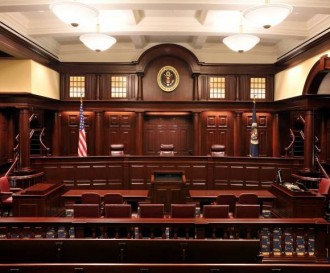July 30, 2018
What’s Zup? Water Board Patent Obvious; Secondary Considerations Too Weak to Show Otherwise
In Zup, LLC v. Nash Manufacturing, Inc., [2017-1601] (July 25, 2018), the Federal Circuit affirmed the district court’s judgment that claims 1 and 9 of U.S. Patent No. 8,292,681 on a water recreational board and a method of riding such a board were invalid for obviousness.
Zup and Nash had discussions about a potential joint manufacturing venture for the ZUP Board, and when they fell through, Nash brought the accused product to market. Zup sued Nash, and the district court granted Nash’s motion for summary judgment of invalidity. The parties agreed on the content of the prior art, and level of skill, but disagreed on whether a person of ordinary skill in the art would have been motivated to combine the prior art references in the way claimed in the patent, and whether the district court properly evaluated Zup’s evidence of secondary considerations.
The Federal Circuit said that “motivation to combine may be found explicitly or implicitly in market forces; design incentives; the ‘interrelated teachings of multiple patents’; ‘any need or problem known in the field of endeavor at the time of invention and addressed by the patent’; and the background knowledge, creativity, and common sense of the person of ordinary skill.”
The district court explained that the ’681 patent identified known elements in the prior art that aided in rider stability while engaging a water recreational device and simply combined them in one apparatus and method. The district court said that one of ordinary skill in the art would have been motivated to combine the various elements from the prior art references, noting that such motivation would have stemmed from a desire to aid in rider stability, to allow a wide variety of users to enjoy the device, and to aid users in maneuvering between positions on a water board — all motivations that were “a driving force throughout the prior art and have been shared by many inventors in the water recreational device industry.
The Federal Circuit found that the record supported the district court’s analysis. The Federal Circuit observed that helping riders switch between riding positions had long been a goal of the prior art, citing various portions of the references of record. The Federal Circuit pointed out that Zup admitted that achieving rider stability is an “age-old motivation in this field,” and found that such stability was enhanced in the prior art through the same components employed in the ’681 patent: tow hooks, handles, foot bindings, and other similar features.
In the face of significant evidence regarding the consistent desire for riders to change positions while riding water recreational boards (and the need to maintain stability while doing so), and given that the elements of the ’681 patent were used in the prior art for this very purpose, the Federal Circuit said there was no genuine dispute as to the existence of a motivation to combine the references.
The Federal Circuit further found that Zup’s minimal evidence of secondary considerations does not create a genuine dispute of fact sufficient to withstand summary judgment on the question of obviousness. The Federal Circuit rejected ZUP’s contention that the district court improperly shifted the burden to prove non-obviousness to Zup because Nash introduced no evidence as to secondary considerations, yet Zup still lost, noting that “any concerns regarding improper burden allocation can be quickly dismissed. The Federal Circuit said that the burden of persuasion remains with the challenger during litigation because every issued patent is entitled to a presumption of validity.
While the burden of persuasion remains with the challenger, however, a patentee bears the burden of production with respect to evidence of secondary considerations of nonobviousness. The Federal Circuit said that it is clear that the district court kept the ultimate burden of persuasion on the patent challenger throughout the obviousness analysis. Any argument that the district court improperly shifted the burden is therefore without merit.
On the issue of secondary considerations, the Federal Circuit said that where the differences between the prior art and the claimed invention are minimal, it cannot be said that any long-felt need was unsolved. The Federal Circuit further found that the record evidence indicates that the claimed invention was not the first to achieve the goal of helping users maneuver between positions on a water recreational board.
The Federal Circuit rejected the arguments of copying, noting that Nash’s instructions suggest a configuration that is different from Zup’s product, dispelling any inference of copying.
The Federal Circuit concluded that the weak evidence of secondary considerations presented here simply cannot overcome the strong showing of obviousness, quoting “a claimed invention represents no more than the predictable use of prior art elements according to established functions, as here, evidence of secondary indicia are frequently deemed inadequate to establish non-obviousness.”



































